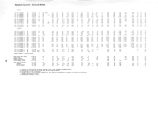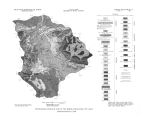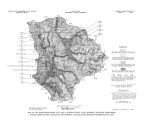| OCR Text |
Show Ground- water budget.- The ground- water budget for the valley fill in Heber Valley is summarized as follows: Acre- feet Recharge: Irrigation water and precipitation on the valley floor 56,000 Subsurface inflow 30,000 Total recharge: 86,000 Discharge: Net evapotranspiration loss ( evapotranspiration less precipitation) 11,000 To Deer Creek Reservoir 47,000 To Provo River 11,000 Subsurface outflow 17,000 Total discharge: 86,000 The derivation of each of these values is explained in the following sections on recharge and discharge. In the calculations of recharge and discharge ( both in Heber Valley and in Rhodes Valley) the assumption is made that precipitation on the valley floor is entirely consumed by evapotranspiration. This assumption is, of course, an oversimplification; some of the precipitation reaches the water table as recharge and some runs off as surface water. The calculated totals for both recharge and discharge are not affected by the simplification. Recharge.- The unconsolidated deposits in Heber Valley are recharged by precipitation on the valley floor; by infiltration of surface water, especially water spread over the land for irrigation; and by subsurface inflow from the surrounding consolidated rocks. The amount of recharge derived from the infiltration of precipitation is small and probably occurs primarily during the spring period of snowmelt. Direct infiltration of water from the Provo River is also small; most of the time the Provo River through Heber Valley is a gaining stream and removes water from the aquifer rather than adding water to it. The infiltration of irrigation water is the major source of recharge to the valley fill. Most of the valley bottom is irrigated, and because the infiltration rate is rapid, each application of irrigation water adds considerable recharge to the aquifer. The average annual recharge in Heber Valley is somewhat more than the average annual change in storage, but the difference between annual change in storage and annual recharge 27 |
































































































